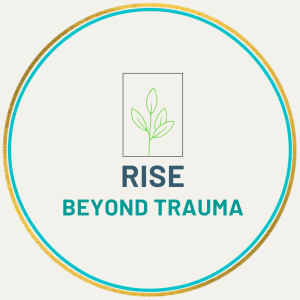Legal mass tort cases have gained significant attention in recent years. These complex lawsuits involve numerous individuals who have suffered injuries or harm due to a common product or action. In this blog post, we will explore the mental health consequences of legal mass tort, provide its definition, types, key elements, and the legal process involved.
What is Legal Mass Tort?
Legal mass tort refers to a civil action in which a large number of individuals file individual claims against a common defendant or defendants. The claims arise from similar injuries or harm caused by a defective product, dangerous drug, environmental contamination, or any other wrongful action.
These claims can be brought on their own or in a class-action lawsuit.
Mass tort cases often result in large settlements or judgments for the plaintiffs. For instance, if a pharmaceutical company produces a dangerous drug that causes harm to many people, they could bring a mass tort case against the company to seek compensation for their damages.
Types of Legal Mass Tort
1. Product Liability: Mass tort cases often involve defective products that have caused widespread harm to consumers. Examples include faulty medical devices, unsafe pharmaceutical drugs, and dangerous consumer goods. Companies that produce these products can be held accountable for any physical, emotional, or financial damages that their products cause if it can be proven that the product was defective or not properly tested.
2. Environmental Mass Tort: These cases arise when a large group of individuals suffers injuries or health issues due to exposure to toxic substances or environmental hazards, such as chemical spills, pollution, or asbestos exposure.
3. Consumer Mass Tort: Consumer mass torts occur when a product or service provider engages in deceptive practices or fails to warn consumers about potential risks. It can include cases against manufacturers, retailers, or service providers. These cases are typically brought by consumers when they believe they have suffered injury or harm due to the company’s deceptive practices. Examples of consumer mass torts are cases involving false advertising, faulty products, and dangerous medications.
Critical Elements of a Legal Mass Tort Case
To establish a legal mass tort case, several key elements must be present:
1. Commonality: The claims must arise from a common product or action with similar injuries or harm suffered by the plaintiffs. For example, a class action lawsuit against a pharmaceutical company for a drug that caused organ damage to multiple patients would be a valid mass tort case.
2. Numerosity: The number of individuals affected must be significant enough to warrant a mass tort action. Typically, there must be a minimum threshold of plaintiffs. For example, a class action lawsuit may be filed if a product has caused health damages to a significant number of consumers, such as the lawsuit against Monsanto for the health damages caused by its weed killer Roundup.
3. Proximate Cause: There must be a clear link between the defendant’s actions or product and the injuries or harm suffered by the plaintiffs. For example, in the Roundup lawsuit, the plaintiffs were able to prove that exposure to the weed killer directly caused them to develop Non-Hodgkin’s lymphoma.
The Legal Process
1. Case Evaluation: Attorneys evaluate the claims to determine if they meet the criteria for a mass tort action. They gather evidence, consult with experts, and assess the strength of each individual claim.
2. Filing the Lawsuit: Once the attorney determines that a mass tort case is viable, they file a lawsuit on behalf of the plaintiffs. It allows the court to consolidate the claims into a single action efficiently.
3. Discovery Phase: Both parties exchange information and evidence during this phase. Depositions, document requests, and expert testimonies may be part of the discovery process.
4. Settlement or Trial: The parties may negotiate a settlement after the discovery phase. If a settlement cannot be reached, the case proceeds to trial, where a judge or jury determines the outcome.
5. Compensation: If successful, plaintiffs may receive compensation for their injuries, medical expenses, lost wages, pain, and suffering, depending on the verdict or settlement agreement.
Mass Torts vs. Class Actions
Despite what many people think, class actions and mass torts are not the same thing.
Many people can become part of a class action if they suffer similar damage caused by the same defendant(s). Unlike multidistrict litigation, all plaintiffs have their claims joined as one big case in a class action.
It is common for class members to have little or no involvement in their case. Additionally, they do not have any decision-making power once they have joined the class. When plaintiffs join a class action, they will be legally bound by any settlement agreement reached or any decision reached by the judge or jury.
Also, a class action requires you to give up control of the case. If you don’t have any control over your case and don’t have any opportunity to decline a settlement offer and push for more compensation, it may be challenging for some people to sit around and wait.
If you’re considering joining a class, you should know the consequences. Help is available from an experienced class action lawyer.
Finding Emotional Support
Participating in a class action or mass tort can be emotionally draining, as it can take a long time to resolve the case and get the compensation you deserve. The mental health impact of long-term litigation can be significant, and it is important to make sure that you are getting the support and help you need throughout the process.
It can be helpful to talk to a mental health professional who can provide support and guidance. Additionally, joining a support group with others who are going through the same experience can be beneficial in managing your stress levels. Finally, make sure you take breaks from the litigation process when needed to give yourself a chance to recharge.
To find a mental health practitioner near you, visit our database.
Takeaway
Legal mass tort cases play a crucial role in holding corporations accountable for the harm caused to individuals. Individuals affected by defective products or wrongful actions can seek justice and compensation by understanding the complexities and processes involved in these cases. If you or someone you know is dealing with a situation due to a mass tort case, consult an experienced attorney to evaluate your options and protect your rights.
For more information about legal issues, financial tips, and other lifestyle content, follow our blog at LGBTQ and ALL.















